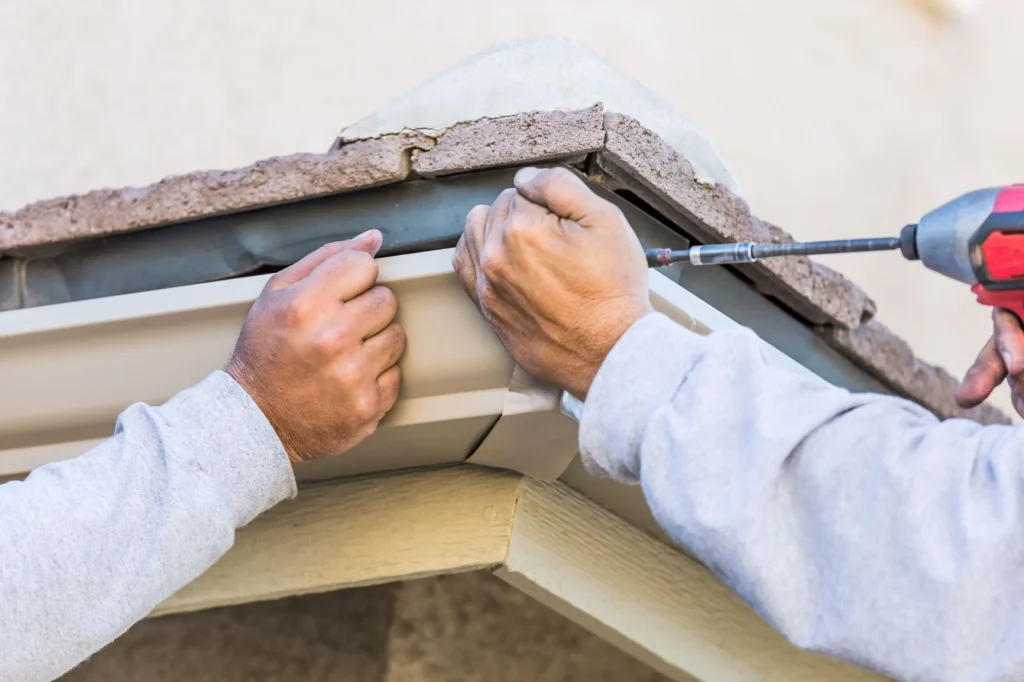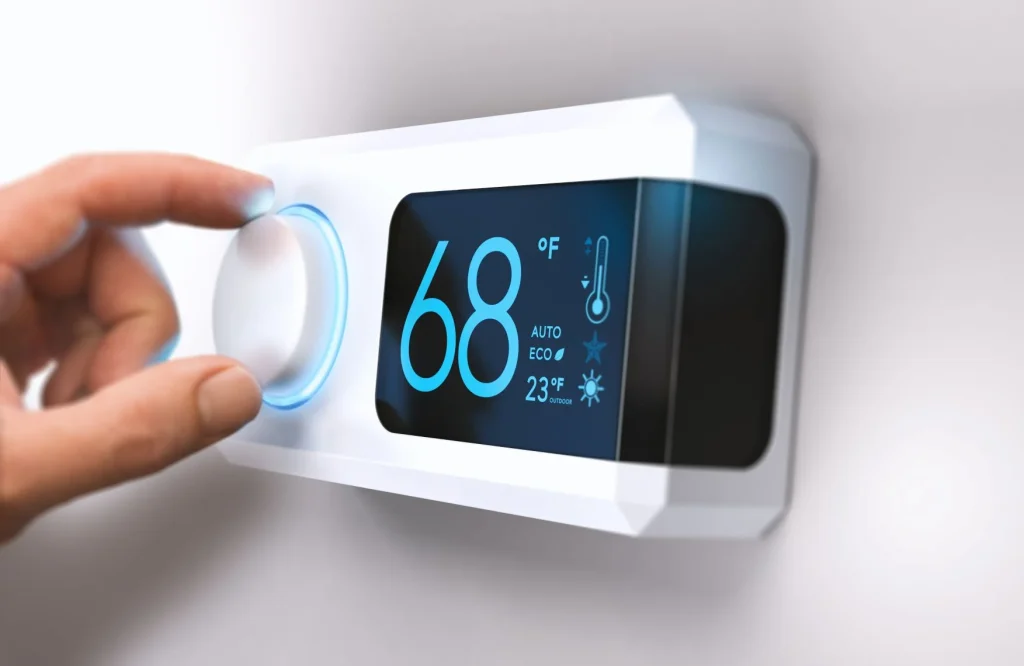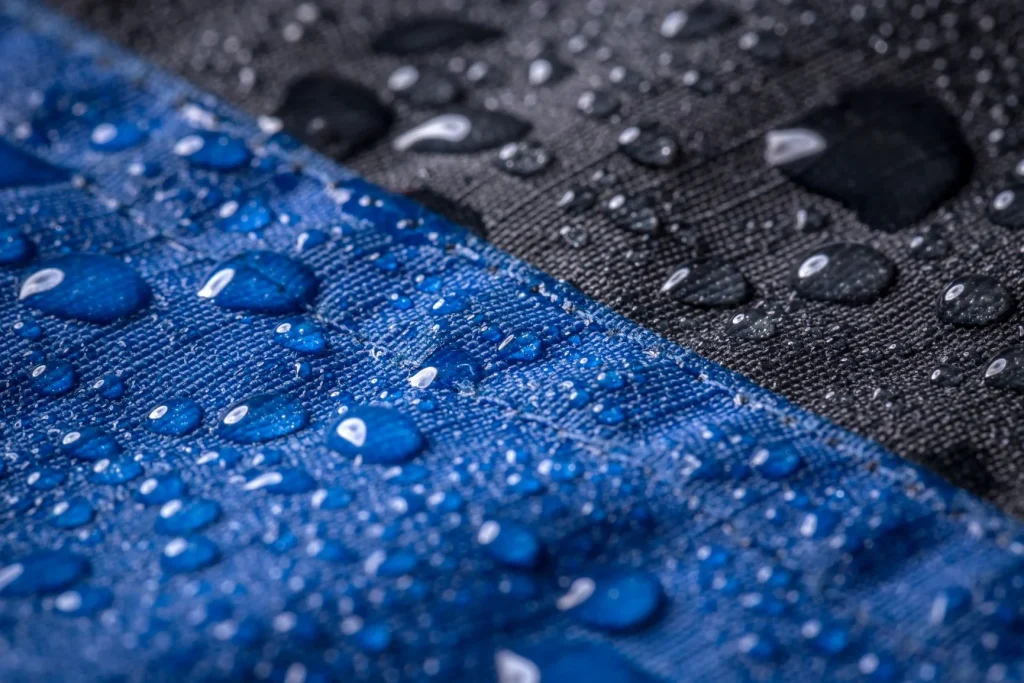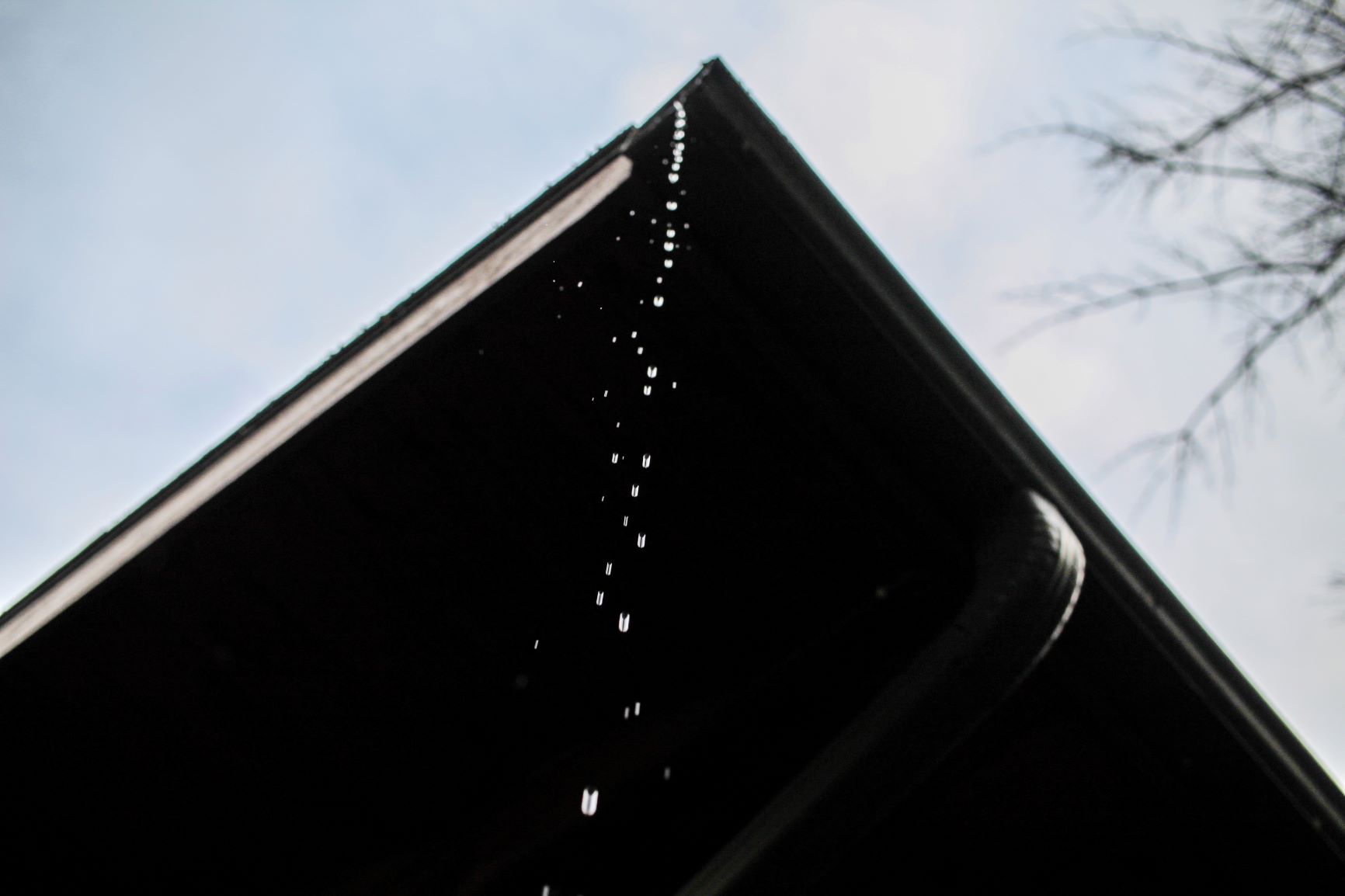Weatherproofing your home is one of the most important things you have to invest in, whether you’re building a house from scratch or buying an RFO house and lot. In this article, we’ll show you how to make your home an “all-weather” property, be it an existing house or a new house.
The Philippine weather
For Filipinos, the Philippine weather does not have cold winter air, it’s just hot, hotter, rainy, and stormy. That pretty much sums up the year.
Specifically, the Department of Science and Technology’s (DOST) Philippine Atmospheric, Geophysical and Astronomical Services Administration (PAGASA) says that the climate of the country is tropical and maritime — characterized by relatively high temperature and humidity, and abundant rainfall.
The average temperature in the country — except for Baguio — is 26.6 degrees Celsius, with the coolest falling to 25.5 degrees Celsius and the warmest rising to 28.3 degrees Celsius. However, since the country is also very humid, humidity varies between 71 percent to 85 percent. This combination of high temperature and high humidity has caused the country to have a peak heat index of 53 degrees Celsius.
So, if you’re a foreigner who wants to visit the country but doesn’t do well with heat, you might want to avoid March to May, because it can get extremely uncomfortable, even for those living in the country. If you’re planning on migrating to the Philippines and buying an RFO house and lot, you can choose to live in the relatively cool cities or provinces.
As for seasons, the country is divided into two seasons: The dry season between December to May and the rainy season between June to November. The dry season is further divided into two seasons: the cool dry season between December and February which is a perfect time to visit Baguio City, and the hot dry season between March to May.
Because of the country’s varying weather conditions, houses can differ from one area or island to another. According to Business Inquirer, Filipino architects promote safer buildings and homes by advocating for energy-efficient features, storm-proofing, sturdier roofs and walls, and flood mitigation. If you’re planning on buying an RFO house and lot, weather-proofing your property will be a good investment, especially if you want to buy from disaster-prone areas.
How to Make a Weatherproof House:

In this section, we’ll show you how to weather-proof an RFO house and lot, or a home that’s already built. These are the things that you can add to your home to make it perfect for any weather in the Philippines.
Switch to Storm Windows
Most readily-built houses in the Philippines are either single-pane or double-pane, with plain glass. However, these thin glass windows break pretty easily it may not be the best way to protect your house from storms and break-ins.
Storm windows are panels mounted to either the inside or outside of an existing window pane. These windows have a lot of benefits, however, once you install them, you won’t be able to use your existing windows anymore. Although, storm windows are pretty easy to remove because they’re designed to fit the current needs of the house based on the weather.
The Department of Energy of the United States recommends investing in Low-E (low emissivity) storm windows. These windows have the same benefits as storm windows, but it’s more insulating because it reflect heat. Newer Low-E storm windows are designed to blend with any existing architecture and are available as fixed or operable. Other benefits of Low-E storm windows include:
- Reduces drafts
- Noise reduction
- Reflects radiant heat 35 percent better than clear glass
- Can act as an air-sealing measure, which reduces home air leakage by 10 percent
- Energy-saving, but cheaper option for full window replacements
Use Window Attachments or Covers
Window attachments or covers are important for any house, especially when you’re in a tropical country. 75 percent of UVA rays pass through windows, which can potentially damage the interior of your home and — worse — can cause premature aging.
If you have air-conditioning in your entire house, this is an essential piece because it can help you reduce electricity costs. According to the US Department of Energy, countries that have hot weather conditions are recommended to install energy-efficient window attachments because about 76 percent of sunlight enters the house and becomes heat. Some of the benefits of window attachments include:
- Comfortable home
- Control glare from sunlight
- Energy-efficient
- Provides privacy
- Better temperature control
- Reduce solar heat gain during the hot season
- Reduce heat loss during the cold season
There are different types of window coverings for two main purposes: interior and exterior.
Interior window attachments include blinds, pleated shades, Roman shades, roller shades, storm windows, shutters, and cellular shades. Meanwhile, exterior window attachments include exterior shades, solar screens, external storm windows, plastic films applied to glass, and awnings.
For interior window attachments, the most common types in the Philippines are roller shades, Venetian blinds, and blackout curtains. There are pros and cons to each one, but probably the worst mistake you can make is using Venetian blinds because they accumulate dust and can be very difficult to clean. Roller shades and blackout curtains are getting the most hype because they practically block 99 percent of sunlight.
On the other hand, if you’re looking for a classic, timeless, and stylish flare for your windows, you can opt for reflective plastic films. They are fairly cheap and you can easily DIY it if all of your windows are reachable.
Install a Programmable Thermostat

If you’re moving to the hottest areas in the Philippines, like Metro Manila, consider centralizing your air-conditioning and installing a programmable thermostat.
Programmable thermostats are designed to adjust the temperature of the house according to the settings of your choosing. You can set schedules for your preferred temperatures throughout the day, and even what time you want your air-conditioning system on or off.
A programmable thermostat can help you reduce energy bills from using the aircon because it can be set to adapt to your routine. They work well with any existing AC systems, although most new models of ACs have a built-in programmable thermostat.
Install Attic or Basement Insulation
Attic insulation is a commonly ignored addition to most houses in the Philippines because they’re believed to be a “vanity” cost. On the contrary, attic insulation is one of the best ways to cut energy costs.
Insulating your attic can limit air leakage through your ceiling, as 40 percent of home cooling costs include air leaks through your floors, walls, and ceilings.
If your house has multiple floors, your upstairs rooms can be extremely hot during the summer, which makes cooling even more difficult. Having an insulated attic will significantly reduce the amount of heat in those rooms, which means your AC won’t have to work twice as much.
If you’re planning on selling your home as an RFO house and lot, installing attic insulation adds value to your home even if it’s not visible to home buyers. This is a strong selling point because of its long-term benefits and comfort features.
There are different types of attic insulation, including blankets, concrete blocks or forms, foam boards, loose-fill, blown-in, sprayed-in, reflective, and panels. These insulations can be made of different types of materials, including foam, cellulose, wood, polyurethane, mineral wool, and more. You can check out insulation services in the Philippines for more information because this project is too heavy to DIY.
In addition to saving bills, having a hot water heater or a water heater insulating blanket could help with saving electricity bills, and could be handy during a storm.
Waterproof Your Home

To weatherproof your home, you must not forget about waterproofing. Waterproofing a house is your defense against future damage, especially during storms. This can help you prolong the lifespan of wooden and metallic materials in your house. While there’s an added cost to waterproofing a house, the consequences are even more expensive if you don’t apply it.
The areas in your house that need waterproofing include:
Bathrooms
The most difficult areas to waterproof are bathrooms, but they require the most extensive work because this area is exposed to water almost constantly. To prevent the buildup of moisture and leaks, you have to make sure that the walls, floor, and ceiling. If you have a built-in shower, this should also be sealed.
Kitchens
Here, you have to waterproof the counters, cabinets, and backsplash near the sink and stove. Cracked countertops must also be sealed because water can seep into them and affect the cabinet beneath them.
Roofs
Whether you have an existing insulation system installed in your attic or not, you have to waterproof your roofing. It is the most exposed and vulnerable part of your house to the environment, so any weather condition will affect it.
Balconies
Not all homes in the Philippines have balconies, but if you have one, make sure that they’re waterproof especially if you have wooden frames. For concrete structures, you can check for cracks and make sure they’re sealed because it can eventually deteriorate your balcony’s sliding door, door, or window.
Door and Window Frames
Waterproofing your windows is essential, especially if you live in areas in the Philippines that experience a lot of storms. You need to make sure that the joints of your window frame are sealed, including the spaces between the glass and the frame.
Doors are commonly forgotten when it comes to waterproofing, but again, if you’re in a typhoon-prone area, you have to make sure that the doors are properly sealed from any openings to prevent flooding inside your house. Having door draft stoppers could also be of help.
In addition, aside from properly sealing the aforementioned lists, you must fix leaks to prevent further destruction of the house and weather stripping. This could also reduce higher utility bills.
Add a Vent System
Most modern Filipino houses don’t have a proper ventilation system, which makes it very difficult to cool. Although historically, the bahay kubo is known for being extremely ventilated, which makes it optimal for the tropical climate of the country.
There are a lot of ways to ventilate a house. Most architects will add this feature by strategically placing windows to capture the cold air while avoiding the harsh sunlight.
If you want a vent system for your entire house, there are four basic mechanical systems:
Exhaust
This vent system is best for cold climates. For warm, humid seasons, exhaust systems can draw moist air into the walls or ceilings, which can cause moisture damage.
Supply
This ventilation system uses a fan to pressurize your home, forcing the air outside to enter the house. Using a supply ventilation system may not be optimal if you live near polluted areas. However, this system is one of the best options to decrease the humidity in your house.
Balanced
This system involves using two fans and two duct systems. A balanced ventilation system is used to pull in fresh outdoor air into the house and exhaust air from kitchens and bathrooms. This system is perfect for all climates, however, they are relatively more expensive.
Energy Recovery
This type of ventilation system provides a controlled way of ventilating the house while reducing energy costs.
Design Tips for “All-Weather” Houses
In this section, we’ll give you some design ideas for your future home. Starting from the ground up gives you a lot of wiggle room, especially in terms of customizability. You can ask your architect to incorporate some of these design elements:
Orientation
Your house’s orientation matters as it determines how well it will use natural winds and sunlight. While sunlight and wind direction will vary in the area, most architects consider this element in their design process.
Since the sun always rises in the east and sets in the opposite direction, you might want to avoid adding windows or doors in these areas. However, orienting your home to minimize sun exposure needs to be weighed with wind direction. You would want to study how the strongest winds pass through your area, and how to take advantage of that feature to add natural ventilation to your home.
Flood protection
Some areas in the Philippines are basins, which means they are more likely to experience flooding. If you inherited or bought a property in these areas, you have to make sure that your new house is flood-proof.
There are a lot of ways architects and engineers can make your house flood-proof. They will evaluate the risk of flooding in your area and determine how high it can go. Some of the most common anti-flood features include:
- Stilts – This involves raising your house on stilts or higher foundations based on the flood level to ultimately avoid your house from floods. However, this can be relatively expensive because it will alter how your house is designed.
- Foundation vents or a sump pump – Foundation vents allow water to flow through your home and redirect it rather than pool around it. Meanwhile, sump pumps involve letting the water collect beneath your home, and using a pump to remove the water.
- Raised electrical systems – water will damage any electrical and electronic system in your house. More often, your engineers will raise electrical systems above flood level to prevent damage and protect your family during a flood.
- Pipe valves – Pipe valves are used to prevent flood water from entering your sewage and drainage system.
Related Blog: Essential Tips for Safeguarding Your Home Against Rainwater Damage


